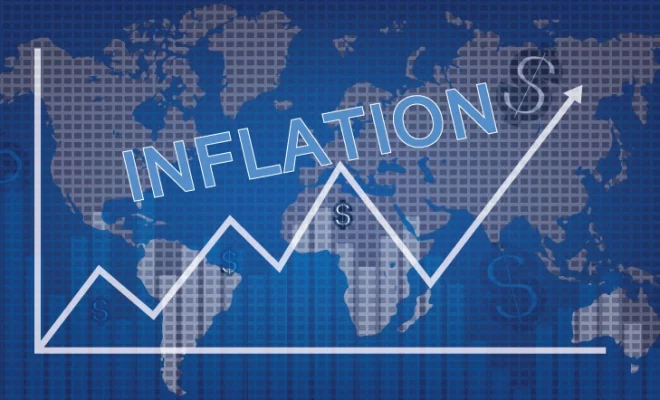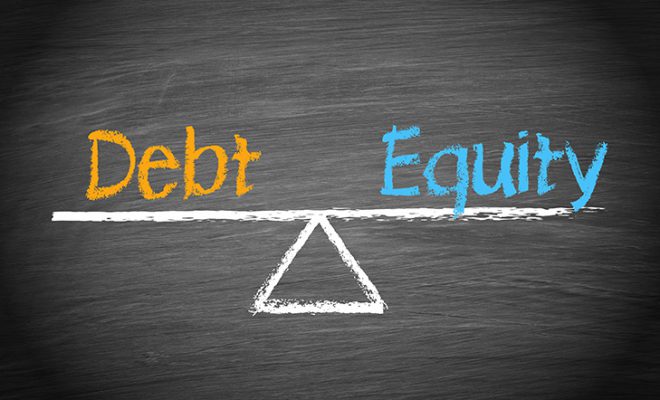Smart Investments to Manage High Inflation and Rising Interest Rates

High-interest rates and inflation can be challenging for investors. Interest rates directly impact your investment returns, and inflation compromises the purchasing power of your money. When this happens at the same time, you can be left in a tricky situation. The U.S. experienced one of the highest inflationary periods in history when the inflation rate was more than 9% in June 2022. The inflation rate for the 12 months ending in March 2023 was also relatively high at 5%. The Federal Reserve announced its decision to pause its interest rate hiking campaign in June, but it also released its projections of potentially raising rates as high as 5.6% before the end of 2023.
A financial advisor can help you understand the impact of high-interest rates and inflation on your finances. This article will also discuss the impact of inflation on interest rates and strategies to follow to lower the effect of inflation on your portfolio.
Table of Contents
Why do interest rates affect inflation?
Inflation and interest rates are correlated. When inflation is high, a country’s central bank may raise interest rates to curb excessive spending and reduce the money supply in the economy. Interest rates are a common tool to control inflation and are widely used worldwide by different governments. If borrowing costs are increased, people are discouraged from borrowing and encouraged to save more. In such a scenario, consumers tend to borrow less for significant purchases such as homes, cars, and investments. Instead, they may choose to save their money in interest-bearing accounts. Investors may shift their funds from riskier assets, such as stocks, to safer interest-bearing instruments, like bonds, to capitalize on high-interest rates.
Increased savings on a mass level leads to reduced consumption, which helps to control inflation. Spending is eventually lowered, contributing to stabilizing prices and cooling down inflation.
7 investments to consider to tackle high-interest rates and inflation
Diversification can be a crucial strategy to beat market volatility, minimize the effect of inflation and interest rates on the portfolio, and enhance returns. Different asset classes may respond differently to inflation and interest rate changes, providing a hedge against potential losses in any single area. This way, even if one investment suffers, the other helps you make up for it.
Here are some of the best investments you can consider during a period of inflation and rising interest rates:
1. Cash-rich companies
You can consider investing in cash-rich companies as these companies may potentially benefit from rising interest rates due to their ability to earn more on their cash reserves. As interest rates rise, companies holding significant cash reserves can generate more interest income from their investments. This can contribute to higher earnings and potentially improve their overall financial position. Companies with large percentages of their book value represented by cash reserves are often seen as having a cushion to withstand economic downturns or invest in growth opportunities. You can focus on companies with a low Debt-to-Equity (D/E) ratio, as these are generally considered financially stable. A low D/E ratio indicates that a company has a smaller proportion of debt relative to its equity. Companies with low debt burdens may have a competitive advantage in a rising interest rate environment as they are less affected by increasing borrowing costs.
2. Charitable Remainder Trusts (CRT)
Another viable option is to invest in a Charitable Remainder Trust (CRT). A CRT can help preserve the principal value of your assets in times of high inflation. By transferring appreciated assets into the trust, you can avoid immediate capital gains taxes while potentially benefiting from a charitable income tax deduction. One of the primary purposes of a CRT is to provide for charitable giving. At the end of the trust term or upon the beneficiaries’ passing, the remaining assets in the trust are distributed to the designated charitable organization. This allows you to support causes you care about while potentially enjoying tax advantages during your lifetime.
3. Treasury Inflation-Protected Securities (TIPS)
Inflation-indexed securities like TIPS can provide protection against inflation. TIPS are low-risk securities backed by the government. They are designed to mimic the inflation rate and offer a hedge against inflation. The principal value of TIPS is adjusted for inflation, ensuring that the investment’s real value is preserved. Moreover, since the value of TIPS increases with inflation, you earn more when inflation is high and less when it is low. In addition to this, TIPS is a relatively low-risk investment with a fixed rate of interest, paid semi-annually. This can offer you a predictable stream of income that can be used to fulfill several goals and ensure liquidity in diverse situations.
TIPS have historically shown a low correlation with other asset classes, which makes them a valuable addition to an investment portfolio and helps to diversify your investments. You can lower risk and enhance your returns at the same time. TIPS are commonly considered a good choice for conservative investors due to their low risk, which is why many investors with high-risk appetites may undermine their benefits. However, they can be beneficial for investors with varying risk appetites during periods of high inflation and can make for a great choice to tackle rising prices.
4. High-quality bonds
You can mitigate risk and achieve a balanced investment mix by including bonds in your portfolio, especially during high-interest-rate environments. Bonds have an inverse relationship with interest rates. Investing in bonds helps preserve capital during periods of high-interest rates. Bond prices generally fall when interest rates rise and increase when interest rates decline. When interest rates are high, newly issued bonds typically come with higher coupon rates to attract investors. This means that if you buy bonds with high-interest rates, you can lock in a higher yield than bonds issued when rates are lower. The higher yield provides the potential for greater investment returns. Bonds pay regular interest payments, and when interest rates are high, the interest income received from bonds will be greater.
While bond prices may fall when interest rates rise, the impact is generally less severe than other asset classes, such as stocks. Bonds are typically considered less volatile and provide more stability to a portfolio, making them a great diversification tool.
5. Real estate
Real estate is one of the most diverse financial tools, as it provides numerous benefits. Real estate is a tangible asset that can give you a sense of security and stability. It can also have an emotional bearing. For instance, purchasing real estate can be a significant milestone in your life. The nostalgia and familial ties with a home or property can be unmatched. In addition to this, real estate also offers intrinsic value. It can provide high returns and offer you the satisfaction of owning a significant tangible asset, especially during inflationary periods when the value of your other investments may be impacted by rising prices.
Real estate investments can provide a potential hedge against inflation by preserving and growing capital over time. This is because real estate is also a commodity. As goods and services prices rise, real estate figures also shoot up. Inflation typically leads to rising prices and increased construction costs. As a result, the value of real estate properties tends to appreciate during inflationary periods. Selling your real estate investments at such a time can fetch you greater returns. Inflation also increases rental rates as the cost of living and operating expenses for property owners and landlords increase. This means if you have a real estate property on rent, you may be able to earn more by renting it out. The steady stream of cash flow can provide you with a means to tackle inflation and ensure liquidity.
However, real estate may not be suitable for all investors due to the high costs. The initial cost of investment as well as the maintenance and management costs of a property, can be high, making it harder for people to consider adding these asset classes to their portfolios. Real Estate Investment Trusts (REITs) can be one way out. REITs are trusts that are managed, owned, and operated by companies. These companies invest in other income-generating real estate ventures, such as malls, office complexes, warehouses, residential buildings, and more. REITs offer dividends as well. When rental rates and the cost of properties increase due to inflation, the dividends from REITs also increase.
6. Stocks
Stock prices can be volatile, and there are no guarantees of returns. However, historically, stocks have shown the ability to outperform inflation over the long term, making them a viable investment option to earn inflation-beating returns. In an inflationary environment, companies may have the ability to increase prices for their goods and services, leading to higher revenues and potentially higher stock prices. Companies simply pass on the burden of the rising costs to consumers. They hike prices when inflation rises and are able to maintain their profitability in times of inflation. This ensures that your stock investments appreciate in an inflationary environment. Many stocks also provide dividend payments to shareholders. Dividends can provide a consistent income stream and help offset the effects of inflation on your investment returns.
It is important to note that stocks are a high-risk asset class. They are suitable for investors with a high-risk appetite and may be more stable over a long investment horizon. Hence, evaluating the pros and cons and impact on your finances may be recommended if you are nearing retirement or have a low-risk appetite.
7. International investments
Expanding your investment horizons to include international markets can be another way to tackle high inflation and interest rates in the domestic country. Geographical diversification can provide additional security and help mitigate risk. Different countries may experience varying inflation and interest rate environments. So it may be advised to invest in global stocks of companies from different sectors to ensure your money is not concentrated in one industry. Additionally, you can also consider international bonds. This way, you are not solely reliant on the performance of your domestic market. However, it is important to note that currency exchange rates can be volatile and may impact the overall return on your investment.
3 more actions you can take during a high-interest rate and inflation environment
8. Convert to a Roth IRA
Converting a Traditional IRA or 401(k) to a Roth IRA during down market periods can be advantageous. A Roth conversion involves transferring an equal number of shares to the same investments, but the cost is reduced due to potential stock price depreciation. When you opt for a Roth conversion, you pay tax on the accrued capital gain from your investments. Lower stock prices can result in lower tax liability when converting to a Roth IRA, helping you save money. Once the funds are converted to a Roth IRA, any future earnings and growth within the account are tax-free, provided you meet the qualifying holding period requirements.
It is prudent to carefully analyze your current and future tax brackets before deciding to convert your 401k or traditional IRA to a Roth IRA. If you expect to be in a lower tax bracket after retirement, it may be more beneficial to keep the funds in a tax-deferred account.
9. Settle your credit card bills
Credit card debt often carries high-interest rates, which can become more burdensome during periods of rising interest rates. Try to prioritize credit card debt repayment to avoid incurring higher expenses. You can first focus on eliminating debts with the highest interest rates to reduce overall interest costs. A financial advisor can help you reduce debt by recommending strategies like debt consolidation, etc. For instance, if you have multiple debts with high-interest rates, consider consolidating them into a single loan or transferring them to a lower-interest-rate credit card. This can help reduce the amount of interest you pay and make your debt more manageable.
10. Consider tax-loss harvesting
Tax-loss harvesting involves selling taxable investment assets, such as stocks, bonds, or mutual funds, at a loss to offset capital gains from a different investment in your portfolio. You can lower your overall tax liability by realizing losses on some investments. You can talk to a financial advisor to understand the applicability of tax loss harvesting on your portfolio.
To conclude
Understanding why interest rates affect inflation, their impact on your portfolio, and what to expect in a high-interest rate and inflation environment can help you make informed decisions. While these factors are out of your control, you can take the right steps to steer your financial growth. However, it is advised to consult a financial advisor and get proper guidance on what suits your needs the best.
WiserAdvisor’s free advisor match service can help you find a financial advisor in your area. Answer some simple questions about your financial needs, and our matching tool will connect you with 1-3 advisors who can best fulfill your financial requirements.



















